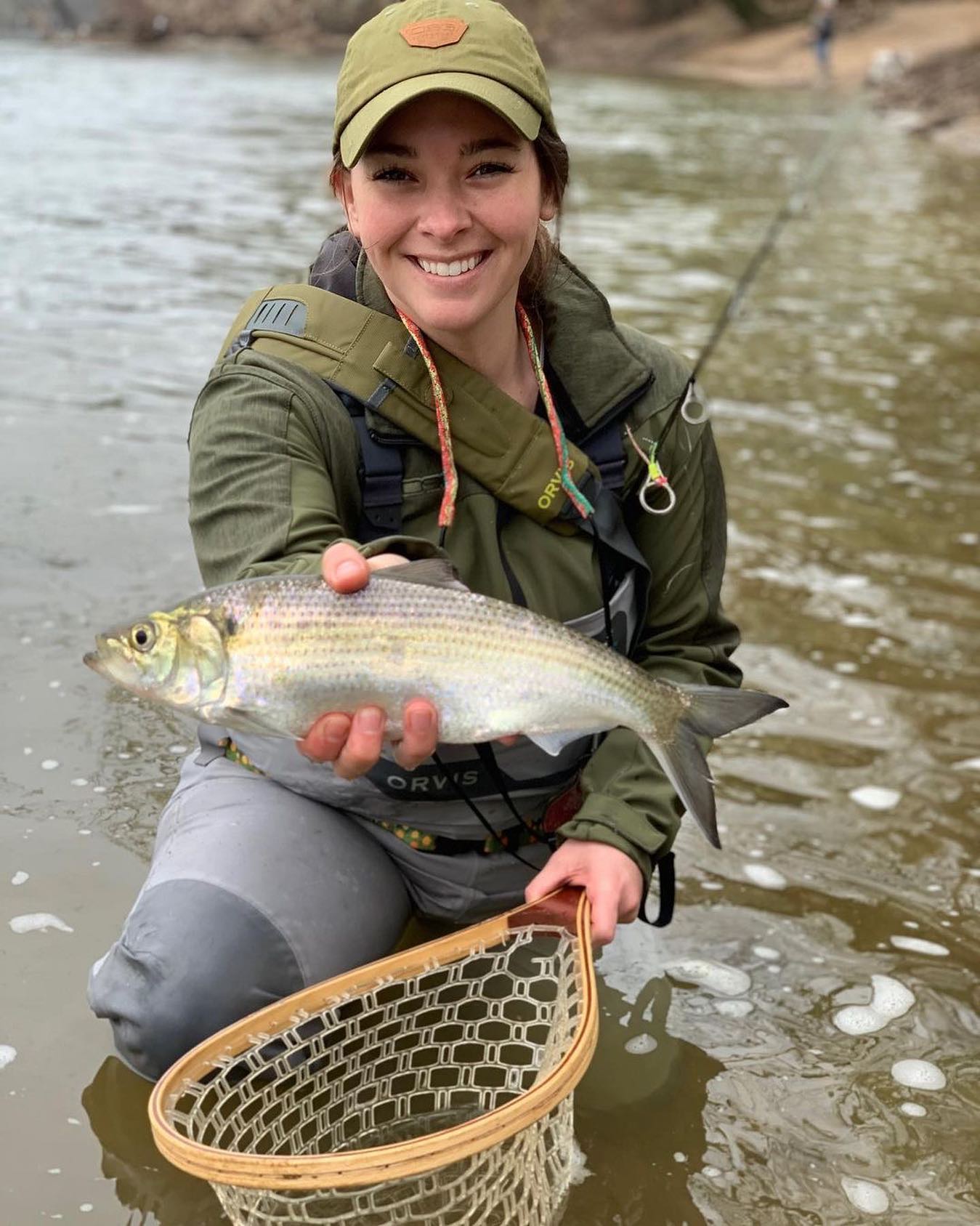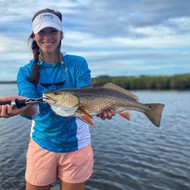Fishing Literacy: Reading the Water
Posted by Samantha Simma on Apr 1st 2021
You may be geared up and ready to hit the water (in part because you’ve donned your DSG fishing gear!), but the gear is just where the day begins. After that, finding fish is part of the challenge ahead. Every body of water is different, with varying factors that include water temperature, depth, currents, vegetation, etc. Which is why exploring new rivers, lakes or streams can be both an exciting and intimidating endeavor. But before you lose hope, know that similar principles of fish behavior can be applied to these different bodies of water. By knowing those patterns and understanding some basics of reading the water, you can better your odds of reeling in some fish.
Behavior
The location of fish is mainly determined by two factors: their quest for food and desire for protection from predators. In any body of water, fish will seek out shelter to evade predators. Think to look for beds of weeds, fallen trees and debris, overhanging vegetation, rocks and river obstructions, anything that will provide fish with cover. As far as food goes, fish will favor locations that aid their ability to obtain food without exerting too much energy. But don’t forget that the two are intertwined—if an area has ample food sources, but is completely exposed, fish will be wary to sit in those waters.

Conditions
In any body of water, there are transition points which provide favorable conditions for fish. This means changes in depth, currents, and cover. For example, faster moving currents are like fish food conveyor belts, but they’re exhausting for fish to swim in. Therefore, they’ll find a current line, where they can ideally sit in a slower moving current that has cover, and then dart into the faster moving currents, even if more exposed, to grab food and then retreat. Dramatic changes in depth, meanwhile, can result in large temperature variations, and fish behave differently in different temperatures.
Location, location, location
Rivers and Streams
Moving, meandering bodies of water boast plenty of cover and current conditions for fish to choose from. First off, look for prime cover opportunities, like undercut banks carved out by the moving water. It’s worth noting that while undercut banks may conceal your shadow, if you walk on top of one, the fish could feel your vibrations, so be careful during your observations.
Currents are a big player in river fishing, even if they are tricky to read at times. Look for current seams between fast and slow moving waters, as the fish will opt to sit along the edge of the faster currents. Lines of bubbles rising to the water’s surface are a sign of these changes. Where water channels combine, or where a stream enters a main flow, will also present these seams. Meanwhile, midstream obstructions, like large rocks, will also create current changes, with the water behind an obstruction offering fish a pocket to rest in between feedings.
Deep pools in waterways, usually caused by changes in the width of the water channel, will create a few notable conditions. First, the currents at the top of these pools will be moving faster than those at the bottom. Second, fish will often gather at the head of the pool, or where the faster currents become less restricted. Here, currents and depth changes are likely to occur, which in-turn effects where the food is at. There's more food in the restricted, faster-moving waters at the head of the pool, before it all slows and is dispersed in the pool itself.

Lakes
First off, if you’re fishing from a lake shore (or any shore, really) rather than a boat, evaluate conditions stealthily. Approach the shoreline with caution and without sunglasses, so you don’t spook the fish in the shallows with your shadows or by the glare of your shades. A good rule of thumb is to evaluate conditions at least ten feet back from the shore.
While you’ll once again be on the lookout for sources of cover in and around the lake's edge, it’s helpful for lake fishing to know the topography and depth of the lake bottom. Deep lakes have more dramatic temperature layers, where the waters near the surface can be almost intolerably warm for fish when it's hot out. However, in the cooler months, the deep waters are too cold, so there’s a balance there. In shallower lakes, the temperature is more constant throughout the waters. Fish will move according to these various temperatures: favoring warmer shallows along the shoreline of a deep, cold lake or moving to those cooler depths on a warm, sunny day.
Note any inflows or outflows from the lake as well. On a hot summer’s day, inflows from streams provide cooler waters that are more oxygenated, while also sweeping food into the lake. Fish will favor all three aspects of these features, under those conditions. Similarly, outflows, while they don’t bring food in, the current they create is a great place for fish to gather food in a body of water that’s mostly stationary.
Finally, consider the wind conditions, which will drive lake water currents. Wind, and the waves it creates, naturally concentrates food against the shoreline. Of all the lake’s shorelines, the downwind side will contain the most food sources.

On the Ocean
The vast, open ocean presents challenges similar to lake fishing, but on a grander scale. Again, in these settings, you’ll want to determine which features (if any) will provide the fish with cover, determine depth changes, and notice currents. Ocean bays are primed for all three conditions, while any outcroppings near their entrance are great places for cover, where fish can keep watch for food in the more open waters.
Pay attention to what other species are doing above and below the water. Is there a flock of birds, or an area where the birds keep diving into the water? Can some restless surface water be the sign of schools of fish below? Notice these signs.
In conclusion, understanding what’s going on above and below the surface of any body of water will be invaluable knowledge when deciding where to fish on it. But mastering the art of reading water is just one of many fishing skills that takes time, so be patient with yourself as you learn!

